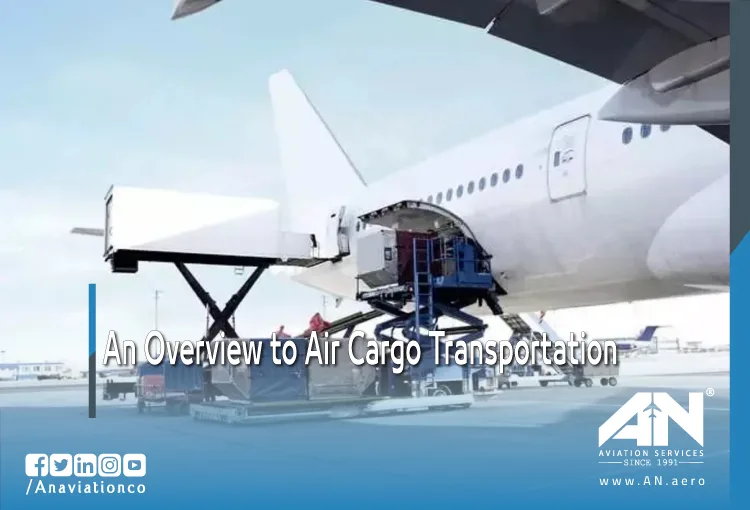
E-commerce has transformed the global marketplace, creating a seamless way for businesses and consumers to connect across borders. With a click of a button, goods can travel halfway around the world in a matter of hours. This growing reliance on fast and efficient delivery systems has had a profound impact on air cargo transportation, making it a cornerstone of the modern supply chain.
In this blog post, we’ll explore how e-commerce has driven the expansion of the air cargo industry, its effects on the movement of goods, and the innovations shaping the future of air transportation.
E-commerce and the Need for Speed
E-commerce thrives on convenience, speed, and reliability. The promise of next-day or even same-day delivery has become a standard in the competitive online marketplace. For this to be possible, businesses depend heavily on air freight services to transport time-sensitive goods efficiently. Unlike other modes of transportation, air cargo ensures that products can reach their final destination quickly, making it the preferred choice for many industries.
Products like medical supplies, temperature-sensitive goods, and live animals often require special handling and rapid delivery to ensure their integrity. For these shipments, air cargo offers unparalleled advantages in terms of both speed and reliability. This demand has pushed the air cargo industry to innovate and scale up operations to keep up with growing e-commerce activity.
Meeting E-commerce Challenges with Air Cargo
As e-commerce platforms expand globally, the air cargo industry faces new opportunities and challenges. Here’s how air freight services are addressing the rising demand:
Quickly and Efficiently Moving Goods:
The growing demand for e-commerce has pushed air cargo companies to develop faster and more efficient systems for transporting goods. For example, real-time tracking and streamlined customs clearance have become standard to maintain the speed customers expect. This is especially crucial for sensitive shipments like electronics, pharmaceuticals, and temperature-sensitive items.
Global Reach and Accessibility:
With e-commerce allowing businesses to connect with customers worldwide, air transportation has become the backbone of global trade. For smaller or remote regions, air freight often remains the only feasible solution to deliver goods efficiently. This has enabled even the smallest online retailers to access international markets.
Specific Requirements for Diverse Goods:
E-commerce goods often have unique needs. From fragile electronics to sensitive goods like food or vaccines, air cargo companies have adapted to meet these demands with specialized equipment, such as temperature-controlled containers, and robust handling procedures. Ensuring goods are transported safely and securely is critical for maintaining customer trust.
Cost-Effective Solutions:
Despite being a premium service, air freight has found ways to provide cost-effective options for e-commerce shipments. Consolidation of shipments, efficient routing, and optimized logistics networks have helped manage costs while ensuring timely deliveries.
Key Industries Driving E-commerce Growth in Air Freight
Several industries rely heavily on air cargo transportation, driven by e-commerce expansion. These include:
- Technology Products: Laptops, smartphones, and gadgets often require rapid delivery, making air freight the ideal choice.
- Fashion and Apparel: Fast fashion relies on the speed of air transportation to meet customer demands for quick seasonal turnover.
- Healthcare: E-commerce has revolutionized the delivery of medical supplies and pharmaceuticals, which often have temperature-sensitive requirements.
- Perishables: Fresh food, flowers, and other temperature-sensitive goods rely on air cargo for quick transportation to preserve freshness.
The Role of the United States in E-commerce Air Cargo
The United States plays a pivotal role in the global air cargo network, thanks to its massive e-commerce market and robust infrastructure. Major air hubs, such as those in Memphis and Louisville, handle millions of tons of e-commerce shipments every year. These airports serve as critical nodes for air freight services, connecting suppliers with customers around the globe.
Moreover, with the rise of platforms like Amazon, e-commerce giants have begun investing in their own air cargo fleets. For example, Amazon Air has increased its capabilities to handle the ever-growing volume of goods that flow through its network, further driving innovation in air cargo transportation.
Innovations in Air Cargo for E-commerce
As the demand for goods by air continues to rise, the air cargo industry is embracing cutting-edge technologies to improve efficiency and service quality:
- Automation and AI: Autonomous ground handling systems, predictive analytics, and artificial intelligence (AI) are transforming how freight is managed. These technologies reduce human error, cut costs, and ensure shipments move faster than ever.
- Temperature-Controlled Solutions: With an increasing need for transporting temperature-sensitive items, air cargo companies are investing in advanced climate-control solutions for their containers.
- Freight Drones: While still in the experimental phase, drones are showing promise in revolutionizing last-mile delivery and remote area access.
- Blockchain Technology: To ensure greater transparency and security in the supply chain, blockchain technology is being tested to track shipments from origin to final destination.
E-commerce and the Future of Air Cargo
The relationship between e-commerce and air transportation will only continue to grow in the coming years. As consumer expectations for faster delivery and greater accessibility rise, the air cargo industry will need to adapt by increasing capacity, improving freight services, and ensuring more sustainable practices.
This expansion comes with its challenges, including managing carbon emissions and addressing rising operational costs. However, through innovation and strategic planning, air freight companies are well-positioned to meet these demands while ensuring the continued growth of the e-commerce market.
Conclusion: Driving the E-commerce Revolution
The rise of e-commerce has reshaped the air cargo industry, creating new opportunities for transporting goods quickly and efficiently. Whether it’s delivering time-sensitive items like medical supplies, maintaining the quality of temperature-sensitive goods, or meeting the growing demand for global trade, air freight has become an indispensable part of the supply chain.
As technology continues to enhance operational efficiency and sustainability, the partnership between e-commerce and air cargo transportation will only strengthen, ensuring a seamless shopping experience for consumers worldwide.

